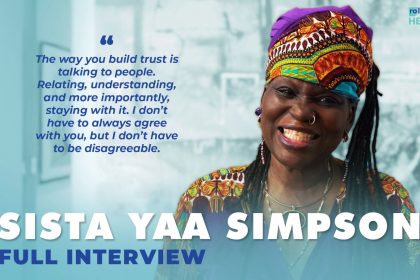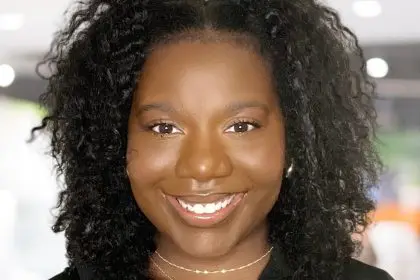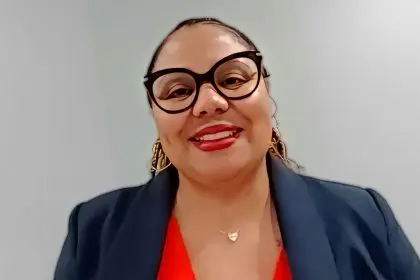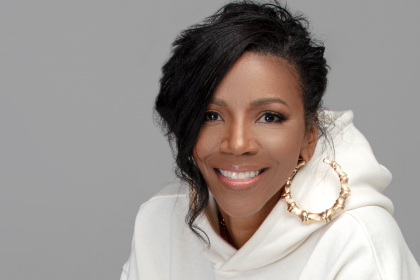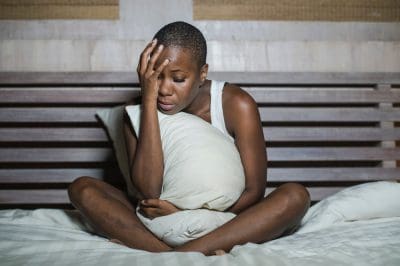Dewi Brown-DeVeaux, DNP, BS, RN-ONC is the senior director of nursing, patient engagement and experience at a major academic denter in New York and the president of the Greater New York City Black Nurses Association. Brown-DeVeaux earned her doctor of nursing practice from Yale University, M.S. in nursing administration from New York University, B.S. in nursing from Molloy College, and B.S. in health care management from Stony Brook University.
With over 18 years of diverse experience in health care, Brown-DeVeaux has excelled as a leader, educator, consultant, and clinician across a variety of nursing specialties. Recognized for her visionary leadership, she is passionately dedicated to spearheading initiatives in diversity, equity, and inclusion. Her work emphasizes mentorship and decisive community engagements to drive systemic change. Brown-DeVeaux is deeply committed to improving health outcomes and addressing health care disparities, particularly in underserved communities.
Welcome to Health IQ. Today, we have the privilege of speaking with Dr. DeVeaux, a distinguished figure in the field of nursing and health care leadership. Dr. DeVeaux has been a fervent advocate for diversity, equity, and inclusion in healthcare, focusing on improving outcomes and reducing disparities in underserved communities. Today, we intend to delve into the ground-breaking work and the collaborative efforts that are setting new standards in healthcare excellence and community engagement. Dr. DeVeaux, thank you for joining us.
Thank you.
Really appreciate it. As before we get started, I really kind of like to throw a little of a curveball. Tell us a little about, who is Dr. DeVeaux?
Oh. She’s who she is! I’m joking. So Dr. DeVeaux is a wife, a mother, an advocate, and I’m senior director of nursing at the Major Academic Medical Center, and also the president of the Greater New York City Black Nurses Association.
Well, that is fantastic. Thank you for that. So, I’m here to really talk about some of the great work you’re doing, especially some of your collaborations. Talk about the collaboration between the New York City Black Nurses Association and Johnson and Johnson. What are the goals of the partnership? And talk about some of the greatness that is a part of the partnership.
One of the greatest things about the partnership with Johnson and Johnson. Our organization is built on the overall platform of increasing health equity. Health equity is not a one year problem. It’s not a 2 year problem. It’s not a 5 year problem. It has existed for centuries. So, one of the things that we wanna do is that we wanna actually bring some partnership into high school programs. We’re buddying with a high school program in bringing healthcare, and healthcare access, and actually showcasing that there are a lot of different health care professions that exist.
So, what Johnson and Johnson is doing, is that they’re providing us that platform. To let these students, the youth, understand that there are a lot of things that are out there, and that we’re gonna expose them to it. And I can talk about myself, I went to an extremely underserved high school. I didn’t even know that nursing exists, and where to come and where to go, as it relates to that. But what we want to do is that we want to change that narrative.
We, as the Greater New York City Black Nurses Association. We want to go into those high schools and talk to the youth about. There’s nursing, there is physical therapy. You can be a physician if you choose to. You can be occupational therapy if you choose to. There are so many different platforms, and then bring them some level of exposure, bringing them into different community service that we do, bring them into schools, bring them into hospitals so that they can be exposed, because if you don’t know it a lot of times, you can’t really achieve it. And we’ve seen that as an organization that we have to really start early in order to overall bring that platform.
No, I absolutely agree, and really exposing the young people to all of the vastness that is the healthcare profession at an early age, to help point them. That’s great. But talk about the importance of partnerships like the resources that an organization like Johnson and Johnson can provide to this work.
A lot of times what is lacking and health care is the overall resources that’s there. It’s lacking in the sense of the way that we do provide care. So, major organizations like Johnson and Johnson, what they do is that they’re able to give us that level of resource that we can do the work that we want to do, but not necessarily have the funds to do it. They can help to provide some of the resources that we might not have within our organization. So, not only should it be limited to just the Greater New York City Black Nurses Association, but what are some of the other resources that you can provide for the minority community for them to be aware that there is another world that exists, that they’re not fully exposed to.
That level of partnership that we are creating, it’s not only gonna be for this generation, but what it’s doing is that it’s gonna set that level of a legacy going forward. As we partner with Johnson and Johnson, we’re able to see that this partnership and these pathway programs work. What can happen is that that can create the blueprint for other organizations to follow. To say, if you have these resources, you bring it forward to the youth. These are the things, these are the measures of success that we’ve seen. These are what other organizations can step up to do.
So, what we’re doing is that we’re extremely happy that Johnson and Johnson is really given us that platform for us to be able to deliver that level of care and provide that level of support for minoritized society and minoritized high school, for them to be able to build up on and develop that skill set, that they do need to move forward.
Yeah. And you know, multi-sectoral collaborations like this, I think, are so important. Can you talk about some of the successes that you guys are having?
So, some of the success that we are having and what we hope to overall achieve, that we have done, and we’ve done from an extremely small scale is that as an organization, we bring the students, and especially students, that we don’t know, that did not have the overnight monetary supplies that they need as a member. What we normally do is that we would come together. We would pull money together, and we would expose them. Now, what this is doing is that it’s taking that onus directly from the members. And now, we have that resources that we’re gonna need.
So, some of the things that we’ve done in the past which will continue to do with this partnership with Johnson and Johnson, is to bring our students directly to healthcare that’s out there. Bring them into the community to show them that there’s a community out there that really needs them, that when they do go into healthcare. They can go back into that community and provide some level of care. We’ve also taken them to our lobbying session in Washington, DC. And what we do is to expose them to that. To say that, you have to go there and access some of the things that you want, and get them to back the bills that are going to support your community.
So, that’s one of the things that we’re gonna be doing with that. And those are some of the successes that we’ve had. And one of the things that we’ve seen year over year is that when we do have students, even though it was on a smaller scale. After they have gone through school. When they finish they come back, they stay within our organization and they help us go into the community. One of the big things that we did, even during Covid. As an organization, we went into the neighborhoods and we went into the neighborhood and provided the service.
‘Cause the neighborhood, a lot of time is not coming to us. So those are some of the successes that you want to see. You want to see individuals that go through these programs, go back into the neighborhood, even if it’s the volunteer time. So that, they can provide that level of equity for everyone else. So, that’s some of the success that we’ve seen. And now, with the Johnson and Johnson partnership, what we’re doing is that we’re widening that scale. And we’re trying to create that on a wider and a larger level.
It’s interesting. You talked about how it’s not available in some of the communities that you serve. I feel like that’s an education set solution. Education is a solution as well. Is that what led to the center for innovation and education and excellence?
Absolutely. Education is the building block for success. Period point blank. Dedication is the building block for success. If you don’t. And I stated before, if you don’t know, you won’t be able to achieve that. Providing that you, with that level of education and the reason why we create that partnership, is that we see year over year, and not only that, the evidence have also stated to us that a lot of times for us, and even if you look at it from just a smaller scale and a smaller level.
You take someone in a particular neighborhood, and the wall is not that hollow. A lot of times we think that the wall is hollow. It’s not hollow. It’s all who has been exposed and who has the privilege to get to the next level. So, our intent is to create that privilege for our youth, is to create that privilege that we’re exposing them and exposing them in the educational feel and creating that level of partnership. So, if we can go into the school and start dropping these little dimes and these little nuggets. What you’ll do is that you see that that will completely mature is like going through a field, and you’re planting every single day.
What you have to do is that you have to water it, and you have to make sure that you fertilize it. We are fertilizing our youth. We are creating that from them very, very early. That they can overall grow and we’re gonna mature that to a point that they’re able to take care of themselves and also their family. So, education is the pathway to a lot of things that we do, and it has to start early. It’s not gonna start when they can’t make it to college, because they didn’t know that college exists.
So, what we wanna do is that we wanna start it very, very early. We’re working directly with high school. But our intent and what we have done is also we have gone into junior high school, and then we’re gonna go even lower than that, because it’s those things that you wanna fertilize. And you wanna just continue to build, that we create this beauty, that at 1 point we won’t talk about. We are in a society and have all this evidence that’s out there that minorities, especially black, don’t have a level of not only education, but health and disparity still exist. We want a kind of level set that, and it start from very, very early and continues to create those levels of building blocks until we get to a place where we no longer will have that statement.
Yeah, it seems like you, you’re taking such a holistic approach this, almost like a cradle to career approach. So, does that include how you came up with the nursing pathways program? And can you tell us a little bit about that program?
Yes. So, the nursing pathway program is really, it’s typically designed to provide education and career development opportunities for individuals entering the nursing field. What it does is that it really helped to bridge that gap between the demand for skilled nursing professionals and available workforce. It also provides opportunities for underrepresented groups in the healthcare profession. And what the pathway program is also gonna do is support continuous professional development and specialized areas.
So, we came up with a pathway program, because again we sit down, we talk about what it is that we need to do as a community organization to continue to increase health, to create health equity, and to also dismantle health disparities. We know that individuals that are ready in the nursing profession, will continue to help us and guide us that way. But we also know that the nursing workforce, that there are limitations, as it relates to that. There’s always more that is needed in the nursing workforce.
So we thought about it. How do we get there? Going into colleges? It’s not gonna work. They’re already in college. But so what are the other things that we need to do in order to create that level of pathway? And the pathway is to bridge that gap between college as well as high school. Well, that gap between junior high school and high school. So, it’s about creating that level of pathway that we can typically design those level of building blocks as I talk about, that others when they go to college, they kind of have an idea what they wanna do. ‘Cause sometimes you don’t, and sometimes you have no idea that nursing is something that you can do.
So, we wanted to kind of level set that, create that level. To say, this is out there. This is a great profession that you can get into. It is the second largest profession in the entire country, apart from retail. It’s also one of the most trusted professions that’s out there. And a lot of times, people be like nursing is hard. No, it’s not. It’s the second largest profession in the entire country, and based on that, there are millions of people who have completed it. So, it’s a path that you can also take. Because when you go to college, a lot of times you hear about how difficult it is.
But if you have someone like me and someone like others within our organization say, I have done it. And what we try to do as an organization as well, is that we really try to talk about our overall pathway, cause we all have pathways. A lot of us don’t just finish. We don’t come from a high middle class family and are going to nursing. Some of us, we had to struggle to get there. So, one of the things that we do for our youth is talk about our struggles, to let them know that that does exist and that not because you might be getting a B or C. That doesn’t mean that you cannot do this. all you have to do, let’s level set.
A lot of us, we did not have a path that was straight for us. We have gone through a lot of corners, a lot of bends. But at the end of the day, this is what we end up doing, and this is what we continue to do. So, the pathway program is really, that is really to kind of say, from high school, what should I start thinking about? How do I get there and have mentors within the organization to help them guide that? So, within our organization, we also have a mentorship program.
So, what these students are also gonna get, is that they are gonna get mentors, someone that they can call and they can pick up the phone. I’m having difficulty with ABC and D, what do you think that I should do? What is the next thing that you think I should do? Or someone that’s just listening to their level of frustration and let them know that it’s okay. Tomorrow is going to be another day. So, those are some of the things that we’re trying to build directly with this pathway program that Johnson and Johnson is really helping us to kind of promote.
No, I think that’s fantastic. And you talked about mentorship and mentorships are so important, but they come with a great deal of responsibility. How do you balance that? And making sure that you also, while you’re teaching, you’re also protecting and serving?
So, mentorship is extremely important. I bill an entire program directly around mentorship, ‘cause I realized how important it was for me. So, for me to move from a staff nurse into a senior director role. It’s not something that I just poof and it happens. It took others that kind of believe in me and believe in my success, or someone that thinks that when I’m struggling. I’m able to call. It’s like, when you have that, call a friend. That’s what mentorship is. So, what you have to do is that we have created a process within our organization to let them know that the only way that we can live on the building blocks within our organization is that we are mentoring everyone else.
Yeah.
So, how do we make sure that we find that 5 minutes or that 20 minutes within our day to say, let’s mentor someone, let’s have a conversation with someone, or see someone come into the organization for the first time and walk over to them to say, Hi! My name is Dewey, how are you? I’m here because I’m trying to think about going into nursing, and I’d be like no problem. Call me tomorrow. How do we make sure that we provide that because that’s the only way that we’re gonna see that level of success.
It doesn’t make sense for me to be successful if I’m unable to bring others along. So, that’s some of the things that we talk about. It doesn’t make sense for a lot of us that are already nurses, or have a masters or doctorate in nursing to be successful. It doesn’t feel good being on top by yourself. So that means, we need to be able to reach behind and pull others with us and that’s the only way that we’re gonna create that level of equity that we see.
But also, yeah. And I think that’s so important. But what’s also important is making sure that the people that are reaching back, reflect the communities that are under represented and underserved. You do a lot of work in the DEI space. Can you talk about how important that work is, and talk about the work itself?
Diversity, Equity and inclusion is one of the most important work that is out there. And it’s a little bit sad that we haven’t caught up to it until late, because in order for you to think about diversity, it is creating a space, everyone wants to be into a space that they feel that they belong. So, I always create diversity, equity, inclusion, as creating a space that people feel that they belong, and that there’s a culture that embodies everyone. So, it’s not a job about the words. It’s not about that level of inclusivity. It’s about feeling that you belong.
‘Cause I can say or you can say, your organization is diverse. Yes, you have the bodies. Yes, you have that 10%. But does that 10% feel like they belong in that space? So, when we talk about diversity, equity, inclusion is to create that space that everyone feels like they belong that you walk in, and you’re that level of body that walk in, and everyone greeting the same way that they would greet everyone else. ‘Cause one of the things that I’ve learned over time is that people are drawn together by commonality. They’re drawn together because maybe we went to the same school together. So we have something to talk about.
Maybe we have the same blue or black eyes that we have something to talk about. So, sometimes people tend to go towards the people that they feel a little bit more attracted to. But how do we create that space where when you walk in, everyone welcomes you? You’d be like, Wow, I’m not used to this. That’s what we’re trying to create and that’s why my organization, the Greater New York City black nurses as well as the organization that I work for. We tried to create.
That once you walk into that organization and you walk into that space, it’s a space that you feel that culture, that culture of overall belonging. So you never have to think about DEI, ‘cause you walk into that space, and you feel like this is amazing. This is great. So, it’s about as we talk about it. We need to debunk the words that we use. Continue to use them but always as you do that work, think about what culture am I creating? Am I creating a space that anyone that walks in here feels that they belong in that space? And that’s when you know that you have achieved DEI.
Absolutely. And I love that part about making sure that the definitions actually are reflecting the actual work and outcomes. That’s incredible. So, as we begin near the end of this wonderful conversation, I have one last question for you. Get out your crystal ball. Let’s look down the road, down the future. What is excellence in this space and success look like for you? 5 or 10 years down the road.
Five or 10 years down the road? What would I like to see? My vision and my hope, and I stay hopeful as I look down into that crystal ball, is that I see a space in which everyone have that culture of belonging, that everyone have that space, that you walk into these high school that we’re talking about the urban assembly, that you walk in there, and the students there feel, they’re talking about it. They’re talking about, Oh, I wanna go into this and I wanna do healthcare, and I wanna do nursing. I don’t want anyone to ever feel that there’s nothing that they can not achieve, because they don’t have that level of resources, or they’re not from that particular neighborhood or from that particular Zip code.
It’s for us to get to a place where we’re no longer talking about creating space for health equity, but health equity exists. That we walk into a space and we’re not really talking about health disparities, ‘cause what is that? What do you mean by that? That should be what we’re talking about. We shouldn’t walk into a space, and everyone feels, oh, guess what? They’re not giving me the pain medication that I need because I am black. But I went to this hospital, and it was so amazing my pain was controlled, and I feel so good. Everyone was so nice.
I’m hoping, and I’m extremely hopeful. And I know that, it may be further than 10 years but as we continue to create those spaces and people and organizations like Johnson and Johnson, Major organizations are stepping up and saying, there is a problem here that we’re trying to fix. And this is the way that we’re gonna fix it. We need to continue to partner with community health organizations. We need to continue to partner with minority neighborhoods. That’s the only way that we’re gonna achieve it. So I’m hopeful. But I know it will happen. I’m hopeful, Kevin. I’m extremely hopeful.
I appreciate you being hopeful.
I’m hopeful. it’s gonna happen. it’s gonna happen. And we will be back having this conversation, that we will have both systemic, as well as grassroots initiatives, and initiatives like this, that create blueprints for others to follow, and that most organizations will continue to follow that path, if they are able to see that level of success at the end. Because we don’t want to create programs as well. Let’s be very clear about that. That is not successful or have measures of success that we’re able to say, let’s replicate this somewhere. So that’s what we’re trying to create.
No, I think that’s perfect. And for those people in our audience that are listening or watching that wanna support or simply follow the work that you’re doing. Is there a website? Is there a social media handle? How can they follow your great work?
Absolutely. So, we have the Greater New York City Black Nurses Association. and that is at Gmail dot com. You can also follow the Greater New York City Black Nurses Association, and you can follow that on Instagram. You can also be a part of our LinkedIn page. You can also. So we have all of those different platforms that you can follow us on.
No, that’s fantastic. And I wanna thank you for the work that you’re doing and taking the time to visit with us here at Health IQ. It’s been a pleasure.
Thank you.
Before we go, I just wanted to also remind everyone that Shirley Chisholm once said, “If they don’t give you a seat at the table, bring a folding chair.” Dr. DeVeaux, thank you for bringing folding chairs for all of us in this important work that you’re doing, and thank you once again for joining us.
Thank you.



